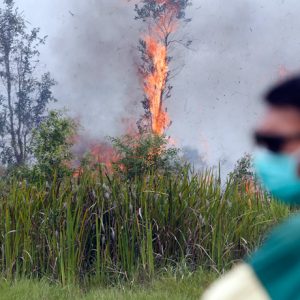The worldwide risks of climate change and the need for global action are now widely known. What is less understood is that not all regions are affected equally. Regions with long and low-lying coastlines, with their populations widely engaged in agriculture, with heavy forest cover and with significant levels of poverty are the most vulnerable. This description matches much of Southeast Asia, and in the past couple of decades the region has experienced rising temperatures, decreasing rainfall, rising sea levels and increased frequency of severe weather events.

Assessing the likely consequences of climate change in social and economic terms is complex and highly uncertain, since it requires projections of trends in greenhouse gas (GHG) emissions, of their impact on temperature, sea levels and so forth, and of the economic and social consequences of this impact. The Asian Development Bank (ADB) conducted this type of modelling for the region a few years ago and, although such exercises cannot be definitive, it provides an important insight into the consequences of unchecked GHG emissions.
The message is that the region stands to suffer more than the global average. Without worldwide efforts to curb emissions, a number of major climatic changes will occur. By 2100, mean temperature in the region will rise by 4.8°C as compared with 1990, and sea levels will rise by 70cm. This is projected to have major consequences, including water and food scarcity. By 2050, 12 million people in Vietnam and nine million in Indonesia will be affected by water scarcity and, without productivity improvements, rice yields are projected to fall by 50% by 2100, relative to 1990. Climate change is also projected to increase deaths from heat-related cardiovascular and respiratory disease by 9% by 2100. However, the report stresses that such outcomes are far from inevitable, and under an active mitigation scenario with serious efforts to control GHG emissions the average temperature rise could be restricted to 1.8°C, with less dramatic consequences. Nearly 200 countries reached a landmark accord at last month’s Paris climate talks to restrict temperature rise to under 2°C, but it remains to be seen if the agreement will translate to real action.
The global economic impact of climate change was estimated in the highly influential study by Lord Nicholas Stern titled The Economics of Climate Change, which put monetary values on impacts such as falls in agricultural yields, water scarcity and loss of biodiversity. This type of analysis is controversial, because it requires monetary values for a range of uncertain impacts, as well as a comparison of impacts a long way into the future with costs in the present.
The ADB study used the same economic model to produce region-specific estimates derived from the analysis of four countries: Indonesia, the Philippines, Thailand and Vietnam. If things do not change, the region is projected to lose a percentage of its potential national income each year. If the loss is based on market effects alone, principally loss of agricultural output and flood damage, this percentage grows over time to reach 2.2% of GDP in 2100. If monetary values are also put on wider social effects, related to health and ecosystem costs, the loss becomes larger, reaching 5.7% in 2100. These regional costs are much higher than the equivalent estimates for the world as a whole, which are at 0.6% of world GDP for market impact and 2.2% for the total including the social effects.
The percentages for the region may appear small but if they are totalled over the whole period up to 2100 they come to a relatively large figure in terms of today’s GDP. This means that the region potentially has a high return on investments made today that can help to avert this damage. The time horizon is long, but investments roughly start to cover their annual costs by 2055 and, beyond that, net benefits grow relatively rapidly, reaching 1.7% of GDP by 2100.
Although the key technological breakthroughs necessary to lower emissions will need to be developed outside the region, the analysis’ implication is that Southeast Asian governments need to consider how they can mitigate climate change. Land use change and forestry are estimated to account for 75% of total GHG emissions in the region, so governments need to curb deforestation and encourage reforestation and sustainable forest management, including control of illegal logging. In energy there is considerable potential for mitigation through a shift away from fossil-fuel sources towards cleaner technologies or renewables. Government support will be critical in terms of sources of funding and the ending of subsidies for the use of fossil fuels.
In short, there is a large agenda for governments, and some climate change issues will require regional cooperation, for example on river basin and water management, forest fires and shared marine resources. Nonetheless there is a limit to what regional governments, individually or collectively, will be able to achieve. The poorer countries of the world, which, it should be remembered, still have relatively low emissions per capita, will require substantial assistance in terms of finance and technology if they are to rise to the climate challenge in the coming decades.
John Weiss is emeritus professor of development economics at the University of Bradford in the UK. He is also an economic consultant and, in 2009, was the economics editor on the ADB’s report titled The Economics of Climate Change in Southeast Asia, the organisation’s largest report on the issue to date.


